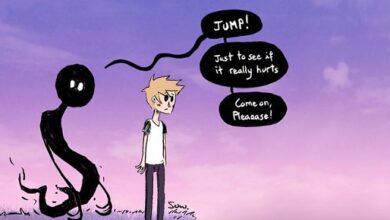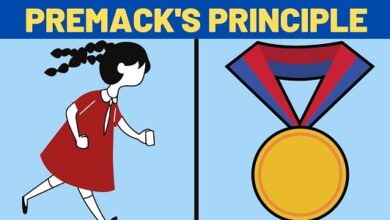Free association psychology with history method and how it works
Free association in psychology is a method and a rule within psychoanalysis, a school of thought founded by Sigmund Freud. It is still used today by psychoanalysts, despite its age, due to its effectiveness in trying to extract unconscious contents in patients, especially when they have difficulty articulating these repressed thoughts into words.
Freud found that a patient’s symptoms were overdetermined by various causes, memories, and unconscious experiences. He also found that the mere enunciation of such traumatic memories only alleviated the symptom but failed to cure the illness.
Free association is that the patient says whatever comes to mind, without trying to filter it in any way. For example, you could say “Say whatever comes to mind in every word I mention”. The patient would have to answer what comes to mind by saying different words like “childhood”, “school”, “playing”, “love” etc.
The patient is guaranteed a safe and intimate environment to be able to say what he wants, without inhibitions. In turn, the therapist ensures that whatever you say will be useful for the analysis.
How does free membership work?
The patient falls into a kind of “trap” by believing that what he says is not related to his problems when, in fact, the opposite occurs: what he says is closely related to his problems, only he cannot understand why. that the connection between what he says and what he feels is repressed.
This happens because psychic material is multidimensional : it is organized as a network of memories in different dimensions. The “free” associations actually refer to several (generally traumatic) scenes related to the symptom, that is, they are overdetermined .
So, although at first it seems crazy what the patient says, eventually he comes to talking about the problem itself. He usually “turns” the subject, showing that the resistance is concentric and that the problem is framed in an infinity of memories and affections.
Within these resistances, there are defense mechanisms , which act to safeguard the oblivion of unconscious content or memory, trying to prevent the patient from remembering or saying what makes him feel bad.
The cathartic method no longer works, because it is not about the patient relieving or relieving his memories in order to resolve them in another way. In this new method, the importance and importance lies in being able to put into words what until now was impossible to say.
With the entry of these contents in the symbolic plane (that is, in the word plane), the patient can think of infinite ways of saying what he thinks or feels and, therefore, of infinite ways also of interpreting his own memories and making them part of the your life story.
Free association history
Freud, early in his career, worked with Josef Breuer conducting studies on hysteria. Greatly influenced by the developments of the French neurologist Jean-Martin Charcot, he began to experiment with hypnosis as a technique within the cathartic method , which consisted of downloading traumas and painful memories through the word.
This technique consisted of placing a person in an altered state of consciousness close to sleep, so that he would respond to the experimenter’s stimuli. It was used to subtract information that the patient could not provide in the waking state.
His aim was to make patients relive the trauma they had experienced through which they had developed neurotic symptoms. Thanks to hypnotization, patients “extended” their consciousness.
Patients had an abbreviated, reproduced impressions that could not be processed at the time they were experienced. This allowed them to put the unprocessed affection into words, removing the pathogenic power of the memories.
However, Freud had difficulty hypnotizing his patients. He concludes that not everyone can fall into this state and recognizes that he is not a good hypnotist. Looking for an alternative, he developed the suggestion method .
Similar to hypnosis, this method consisted of pressing lightly on the patient’s head, an action that allowed the memory of unconscious thoughts and memories, as well as the ability to enunciate them through speech.
Using suggestion, Freud encountered a force opposing the emergence of unconscious memories, resistance . Only by being defeated can memories appear. It concludes that the resisting force must be related to the repressive force.
When he discovered that the memories that emerged had no direct relationship with the symptom that Freud was suffering from the patient, he decided, once again, to abandon this technique. This is how the free association method develops.
What happens when you freely associate?
In free association, the same forces that produce our dreams work, that is, the mechanisms of condensation and displacement .
Condensation
Condensation is the mechanism by which, in a single content, affections and memories from different places converge, while maintaining an associative bond between all. What is said in association brings condensed unconscious content. Therefore, the content is superfluous only at first glance.
Displacement
Displacement is the mechanism through which the affect of a representation proceeds to be linked to an originally weak representation. This representation maintains an associative link with the first one.
This mechanism can be observed when the subject mentions traumatic memories or thoughts, feeling them strange to him, while he may have difficulty talking about apparently everyday or mundane issues.
Both forces are closely linked and work together. Thus, one memory condensed several affects thanks to the different affect displacements of other memories, which leads to this first memory condensing the others, as much as it can be linked in the associative chain.
Free association method (analyst)
This method is born together with the new technique of the same name. While the patient is saying whatever comes to mind, without using censorship or refusing to say anything, the analyst remains in a state of floating attention.
In this state, the analyst also neglects his own unconscious resistance and preconscious prejudices, so that he does not favor one content over another. It is a counterpoint to the work performed by the patient in the therapeutic space.
Thus, the analyst allows his unconscious to merge the network of connections between affects and memories that the patient says in an almost incoherent way, so that communication between the two occurs from the unconscious to the unconscious .
The patient speaks to the analyst, with certain unconscious connections established for what is painful. The analyst, on the other hand, uses his own unconscious to interpret this discourse and elucidate unconscious connections that the patient is unable to recognize for himself.
When the analyst returns an interpretation of his speech, the patient is able to make these repressed contents conscious and, therefore, rework them in such a way that they are no longer disturbing in his psyche.
As the content has been put into words, the analyst offers an interpretation of what the patient said; This one will seem strange to you at first, but it will trigger a continual reframing of those memories and affects in such a way that it becomes part of your consciousness and loses its traumatic character.
Other uses of free association
Although this technique was born in the clinical scenario with a therapeutic objective, the fact that it is an “easy” way of manifesting the unconscious soon caught the interest of people outside of psychoanalysis and, consequently, the expansion of this technique in other areas and areas. for other purposes
Its use was especially popularized in the artistic field, with artists such as Salvador Dalí using it to be able to evoke original ideas and without the censorship of adapting to the fashions and artistic expectations of the time.
Salvador Dalí was one of the greatest exponents of surrealism, an artistic trend that focused on valuing the irrational and the unconscious as essential elements of art. Closely related to psychoanalysis in its content, it is not surprising that they also adopted some of its techniques.
Within this current, free association was known as automatism. Poets dedicated themselves to writing down whatever phrase, feeling or thought occurred to him without paying attention to rhyme or meter, respecting only his imagination and associative dinner.
In the field of painting, the proposal was similar: the artist should look at the blank canvas and let himself be carried away by imagination, without paying attention to prejudices about technique or style.
The unconscious is reflected in the apparently absurdity of surreal themes, given that dreams and their productions are painted. They don’t have a logic and most of the time they don’t respond to real objects.
André Breton, another great exponent of surrealism, used free association to try to express, through his art, a connection between conscious and unconscious reality, trying to bring them together and show them as not so different from each other.
Conclusion
Free association was the product of a need on Freud’s part to find an alternative to the limitations that hypnosis and suggestion brought. As he advanced in his theoretical developments, the cathartic method was insufficient as a way of exploring the unconscious, which he changed by adopting the method of free association.
Currently, the method is used by psychoanalysts around the world with virtually no changes. This is due to its great effectiveness in stimulating the insertion of words in unconscious content.
If you are interested in knowing more about your own unconscious, you can try this test: take a blank sheet of paper and start writing the first thing that comes to your mind, the more you do it, the more depth the content will reach.




